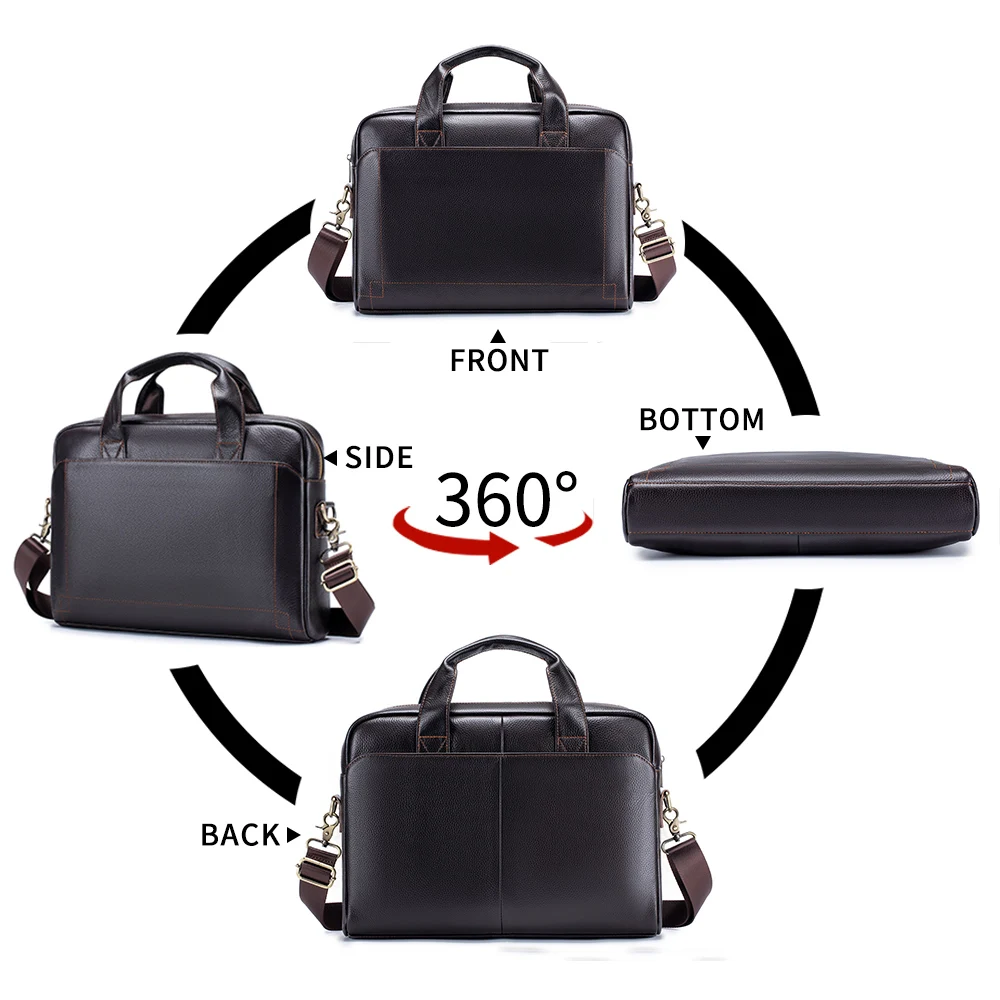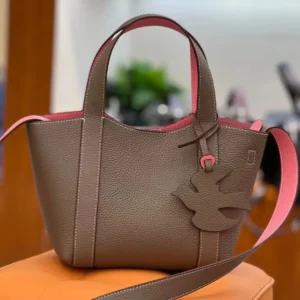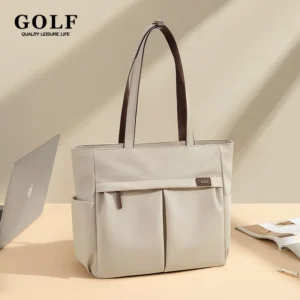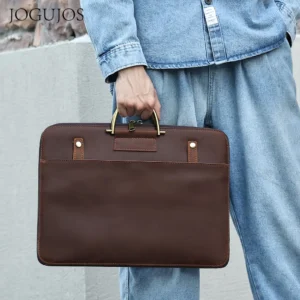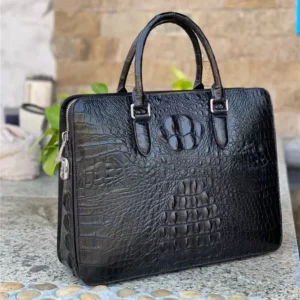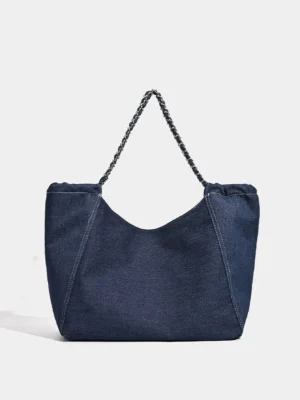The Evolution of Professional Carrying: Are Briefcases Still Relevant?
The quintessential image of a professional striding confidently into an office with a leather briefcase in hand has been embedded in our collective understanding of business culture for generations. But as workplace norms evolve, many wonder: do professionals still use briefcases in today’s changing work environment?
The short answer is yes – briefcases are still relevant, but their role and prevalence have transformed significantly. Traditional briefcases haven’t disappeared from professional settings, but they’ve been joined by various alternatives that reflect broader shifts in workplace culture.
Several key trends have influenced this evolution:
- Relaxed dress codes across industries have led to more casual professional accessories
- Remote and hybrid work environments have changed what professionals need to carry daily
- Technology has transformed document management, reducing the need for paper transport
- Ergonomic concerns have increased awareness about carrying comfort for daily commutes
Recent market research indicates that while traditional briefcase sales have declined by approximately 15% over the past decade, premium briefcase segments remain stable, suggesting a shift toward quality over quantity. Meanwhile, professional backpack sales have increased by nearly 30%, highlighting the growing acceptance of alternative carrying solutions.
The tension between tradition and modernity in professional accessories creates an interesting dynamic – one where professional leather briefcases maintain relevance in certain contexts while alternatives gain ground in others. This evolution reflects not just changing fashion but fundamental shifts in how we work and what it means to present oneself as a professional.
The Traditional Briefcase: Heritage and Symbolism
The briefcase’s journey from practical tool to professional symbol spans centuries. Originally designed in the late 1800s as a slimmer alternative to bulkier luggage, these bags were literally used for carrying “briefs” – legal documents that lawyers needed to transport securely.
By the mid-20th century, the briefcase had transcended its practical origins to become an emblem of professional identity. The classic hardshell attaché case of the 1950s and 1960s represented authority and success in the corporate world. Made predominantly from leather with brass hardware, these cases were built to last decades, often becoming cherished items passed down through generations.
Materials and construction reflected professional values – leather signified quality and permanence, while sturdy frames provided protection for important documents. The structured design projected organization and preparedness, qualities highly valued in business settings.
Hollywood reinforced this symbolism, featuring the briefcase as the accessory of choice for powerful executives, successful lawyers, and government officials. The briefcase became shorthand for professional seriousness and competence.
The definitive guide to leather briefcases reveals how these accessories have historically communicated specific messages in professional environments. Research in workplace psychology suggests that accessories like briefcases can influence perception – both how others perceive you and how you perceive yourself. This explains why many professionals continue to favor traditional cases despite changing workplace norms.
For many businesspeople, particularly in established industries, carrying a quality briefcase remains a deliberate choice that communicates professionalism, attention to detail, and respect for tradition. The case for businessmen using briefcases remains strong in settings where these values are paramount.
Modern Briefcase Adaptations: Merging Tradition with Technology
Today’s briefcases bear little resemblance to their ancestors beyond basic shape and purpose. Modern designs have evolved dramatically to accommodate changing professional needs while maintaining the distinguished aesthetic that made briefcases business icons.
Contemporary briefcase manufacturers have responded to technological demands with thoughtful adaptations:
- Dedicated padded compartments protect laptops, tablets, and other electronic devices
- Cable management systems keep charging accessories organized and accessible
- RFID-blocking pockets protect sensitive electronic information on cards and devices
- Modular interiors allow customizable organization for varied professional needs
- Lightweight materials reduce carrying burden without sacrificing durability
The divide between hard-shell attachés and soft-sided briefcases has widened, with the former becoming more specialized for legal and financial professions, while the latter has embraced versatility. Many professionals now prefer slim leather briefcases that maintain a professional appearance while accommodating modern minimalism and mobility.
Materials have evolved as well. While full-grain leather remains the premium standard, manufacturers now offer high-performance options like weather-resistant treated leathers, technical fabrics with leather accents, and even sustainable alternatives for environmentally conscious professionals.
Price points reflect this diversification, ranging from entry-level options around $150 to luxury briefcases exceeding $2,000. The middle market ($300-700) has seen particular growth, with professionals investing in bags that balance quality craftsmanship with modern functionality.
What remains consistent across these innovations is the briefcase’s core identity – a structured, professional carrying solution that communicates competence and organization. Modern adaptations haven’t replaced this identity but rather expanded its relevance for contemporary workplaces.
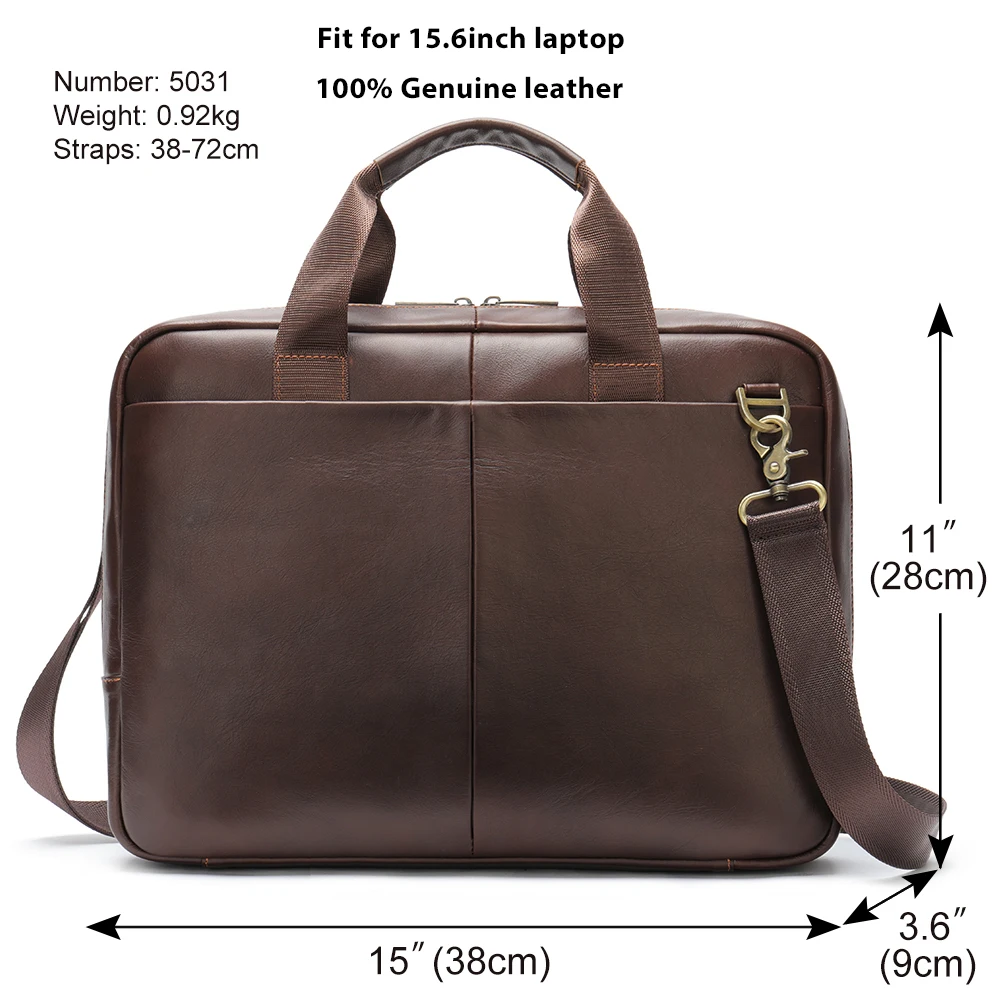
Industry-Specific Briefcase Usage: Who Still Carries Them?
Briefcase usage today varies dramatically across professional landscapes, with some industries maintaining traditional accessories as virtual requirements and others embracing alternatives. Understanding these patterns can provide insight into broader professional cultures and expectations.
| Industry | Briefcase Usage | Reasoning |
|---|---|---|
| Legal | High | Practical need for document transport; courtroom formality; client expectations of traditionalism |
| Finance/Banking | High to Moderate | Projects competence and trustworthiness; common in client-facing roles; signals stability |
| Executive Leadership | Moderate | Status signaling; often uses premium brands; varies by company culture |
| Consulting | Moderate | Client-facing formality balanced with travel practicality; depends on client industry |
| Government/Diplomatic | High | Protocol adherence; formality expectations; document security |
| Technology | Low | Casual culture prioritizes functionality over formality; backpacks predominate |
| Creative Industries | Low to Moderate | Emphasis on uniqueness and self-expression; may use designer or unconventional options |
| Healthcare Administration | Moderate | Balance of professionalism with practical mobility needs |
Industry expectations are often reinforced by client perceptions. “In legal settings, clients often expect a certain presentation,” notes one legal industry consultant. “The briefcase signals preparedness and attention to detail – qualities clients seek in their representation.”
For many professionals in traditional sectors, men’s classic leather briefcases remain essential tools that communicate competence before a word is spoken. In courtrooms, board meetings, and client presentations, these traditional accessories can provide subtle credibility signals that align with expectations.
The correlation between briefcase usage and industry formality is notable. Industries with stricter dress codes and more hierarchical structures tend to maintain traditional accessories, while those emphasizing innovation and flexibility often embrace alternatives.
The Rise of Alternative Professional Bags
As workplace cultures have evolved, so too have the carrying solutions professionals select. Several key alternatives have gained significant traction across various industries:
Professional Backpacks
No longer relegated to students and hikers, today’s professional backpacks bear little resemblance to their casual counterparts. Featuring structured designs, premium materials, and sophisticated color palettes, these bags address ergonomic concerns while maintaining professional appearance.
Tech industry influence has legitimized backpacks in professional settings, with companies like Apple and Google establishing workplace cultures where functionality is prioritized. Professional backpacks typically feature padded laptop compartments, organizational systems for technology accessories, and subtle external designs without excessive straps or branding.
Messenger Bags
Leather messenger bags offer a middle ground between traditional briefcases and more casual options. With a single cross-body strap and a more relaxed structure, these bags balance professionalism with contemporary style. Originally popularized in creative industries, messengers have gained acceptance in consulting, marketing, and mid-level management roles.
The appeal lies in versatility – messenger bags transition smoothly between office meetings, client visits, and after-work settings without appearing out of place. The cross-body design also keeps hands free for navigating public transportation or managing phones and coffee during commutes.
Professional Totes
Breaking gender norms in professional accessories, leather work totes have become mainstream options for professionals of all genders. The open-top design offers easy access to contents while maintaining sufficient organization through internal compartments.
Totes have gained particular traction in industries like publishing, marketing, HR, and education, where professionals need to access materials quickly throughout the day. The growth in this category reflects broader workplace trends toward gender-neutral accessories and emphasis on practicality.
Laptop Sleeves and Portfolios
For minimalists and short-distance commuters, slim portfolios and padded laptop sleeves provide essential protection without bulk. Often paired with other bags as needed, these streamlined options reflect the reduced paper load of digital workplaces.
The shift toward these alternatives has been driven by several factors:
- Changing commute patterns with increased public transportation usage
- Growing awareness of ergonomic health and carrying comfort
- Tech industry’s influence on broader workplace norms
- Blending of work and personal time requiring versatile accessories
Market data shows alternative professional bags growing at approximately 8% annually, with the professional backpack segment experiencing the most rapid expansion at 12-15% yearly growth.
Comparative Analysis: Briefcases vs. Alternative Options
When evaluating professional carrying options, several functional factors determine which solution best meets specific needs:
| Feature | Traditional Briefcase | Professional Backpack | Messenger Bag | Professional Tote |
|---|---|---|---|---|
| Document Protection | Excellent – structured frame prevents bending | Good – may allow some document movement | Moderate – flexible structure may cause bending | Fair – open tops offer limited protection |
| Device Protection | Very Good – dedicated compartments | Excellent – padded compartments with suspension | Good – padded sections but less structure | Moderate – often requires separate sleeve |
| Organization | Excellent – multiple specialized compartments | Very Good – numerous pockets and sections | Good – fewer but functional sections | Fair to Good – varies by design |
| Commute Comfort | Fair – hand/arm carrying causes imbalance | Excellent – weight distribution on both shoulders | Good – weight distribution across body | Fair – hand/arm carrying with better balance than briefcase |
| Professional Appearance | Excellent – especially in traditional industries | Good to Fair – depends on design and industry | Very Good – accepted in most modern offices | Very Good – increasingly mainstream in professional settings |
| Capacity | Moderate – structured design limits expansion | Excellent – multiple compartments with expansion | Good – single main compartment with limited expansion | Very Good – open design accommodates varied items |
| Durability | Excellent – quality construction lasts decades | Very Good – reinforced stitching at stress points | Good – depends on material quality | Good – typically less structured but well-constructed |
For professionals regularly presenting to clients or appearing in formal settings, briefcases – particularly compact yet spacious leather briefcases – offer unmatched professional presentation. However, those with long commutes or back issues often find backpacks significantly more comfortable for daily use.
The ideal solution varies dramatically based on specific needs. A trial attorney may require a structured briefcase for courtroom appearances, while a creative director might prefer a messenger bag that accommodates portfolio materials while projecting creative professionalism.
Cost considerations also factor into decisions, with quality leather briefcases representing significant investments (typically $300-1,500) compared to professional backpacks ($100-400). However, premium briefcases often maintain their appearance and functionality for decades, potentially offering better long-term value.
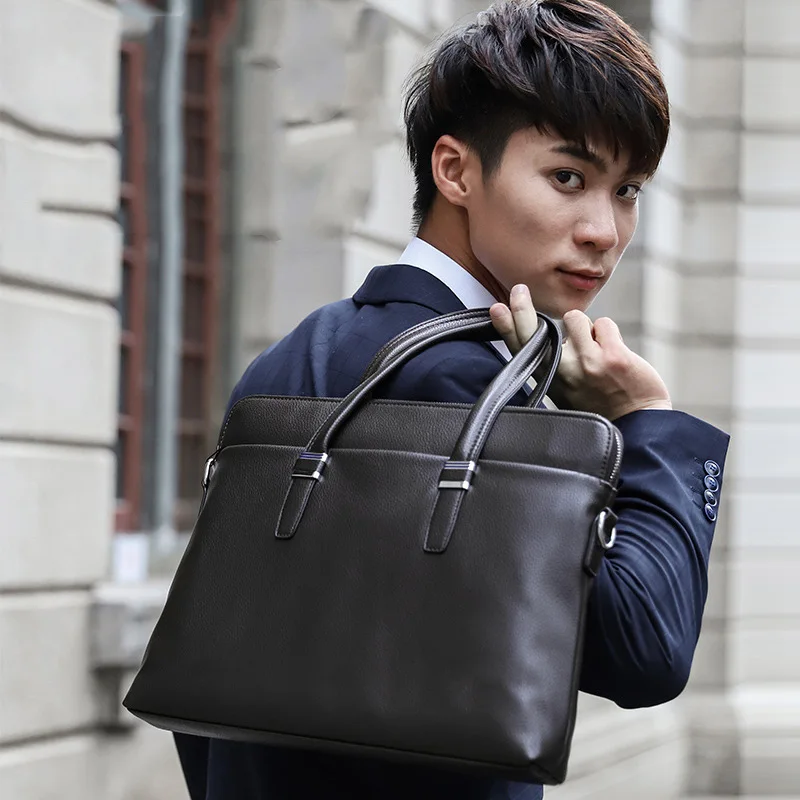
Decision Factors: Choosing the Right Professional Bag
Selecting the ideal professional carrying solution requires considering multiple personal and contextual factors:
Industry Expectations: Assess the unwritten dress code in your specific workplace and industry. Traditional sectors like law, finance, and certain consulting fields may still expect classic briefcases, while tech and creative industries embrace alternatives.
Daily Contents: Inventory what you typically carry. If you transport primarily electronic devices with minimal paper, a slim backpack or messenger might suffice. Those regularly carrying legal documents or presentation materials might require a structured briefcase.
Commute Logistics: Consider your transportation method. Long walks or public transit commutes favor ergonomic options like backpacks or cross-body messengers, while short drives or chauffeur services accommodate any carrying style.
Personal Style and Physical Needs: Your overall professional appearance and physical comfort matter. How to choose the perfect leather briefcase involves matching the bag to both your wardrobe aesthetic and physical requirements.
Career Trajectory: Consider whether your bag aligns with both current and future career aspirations. Early career professionals might select bags that balance current needs with projected growth into more client-facing roles.
The most successful professional bag choice complements rather than complicates daily work life. For many, the solution involves owning multiple options – perhaps a premium briefcase for important meetings and presentations alongside a comfortable backpack for regular office days.
Remember that professional bags represent functional tools first, with style considerations supporting rather than driving decisions. The right bag should enhance productivity through organization while projecting appropriate professional signals.
Men's Classic Leather Briefcase, Slim Leather Laptop Briefcase, Slim Leather Portfolio Briefcase
$93.67 Select options This product has multiple variants. The options may be chosen on the product pageBrown Leather Work Tote, Large Leather Work Tote
$194.38 Select options This product has multiple variants. The options may be chosen on the product pageLeather Laptop Work Tote, Tan Leather Work Tote, Women's Leather Work Tote, Zippered Leather Work Tote
Price range: $223.62 through $237.97 Select options This product has multiple variants. The options may be chosen on the product pageClassic Laptop Briefcase, Men's Classic Leather Briefcase, Slim Leather Attache Case
Price range: $353.50 through $360.81 Select options This product has multiple variants. The options may be chosen on the product pageBlack Leather Briefcase, Leather Document Bag, Men's Classic Leather Briefcase
Genuine Crocodile Leather Executive Briefcase with Password Lock – Premium Business Document Carrier$1,201.87 Select options This product has multiple variants. The options may be chosen on the product pageCanvas & Leather Messenger Bag, Leather Commuter Tote
$80.41 Select options This product has multiple variants. The options may be chosen on the product page
The Modern Appeal of Quality Briefcases
Despite the growing popularity of alternative carrying solutions, well-crafted briefcases maintain a distinct appeal for many professionals. This continued relevance stems from several factors beyond simple tradition.
Quality leather briefcases offer unparalleled material distinction. Full-grain leather develops a unique patina over time, creating a personal artifact that tells the story of a career. This living quality stands in stark contrast to the replaceability of synthetic materials.
“I chose a traditional briefcase deliberately,” explains one investment advisor. “In client meetings, it subtly communicates stability and attention to detail – values central to how I manage their investments.”
For others, the appeal lies in craftsmanship rarely found in mass-produced alternatives. Hand-stitched edges, hand-burnished leather, and solid brass hardware represent craftsmanship values increasingly rare in disposable consumer culture. Classic leather briefcases from quality manufacturers often involve dozens of hours of skilled handwork.
The minimalist movement has also renewed appreciation for objects that are both beautiful and functional. A well-designed briefcase achieves this balance, serving practical needs while providing aesthetic pleasure. In a world of plastic disposables, such objects become increasingly meaningful.
For professionals navigating varied contexts, a quality briefcase can serve as a bridge between traditional and contemporary business environments. Modern interpretations with subtle laptop compartments and phone pockets maintain traditional appearance while accommodating technology essentials.
Rather than seeing briefcases as outdated, many professionals view carefully selected leather goods as sustainable alternatives to the cycle of replacing lower-quality bags every few years – an investment in quality over quantity.

Maintaining Professionalism: Care Tips for Your Chosen Bag
Regardless of which professional carrying solution you select, proper maintenance ensures both longevity and continued professional appearance. These care practices protect your investment while preserving the message of professionalism your bag communicates:
Regular cleaning appropriate to material: Leather requires different care than canvas or nylon. For leather items, wipe with a slightly damp cloth weekly and condition quarterly. Canvas bags can often be spot cleaned with mild soap and water.
Preventative care: Apply appropriate protectors to your bag before first use. For leather, quality water and stain repellents help maintain appearance, while preventing scratches on leather briefcases requires consistent handling practices.
Interior maintenance: Empty your bag weekly to remove accumulated debris. Vacuum interiors occasionally using low suction and a small attachment. This prevents linings from becoming repositories for dust and small items.
Strategic storage: Store bags properly when not in use. Leather briefcases should maintain shape with light stuffing, while hanging storage works well for backpacks and messengers. Avoid extended sun exposure which can fade materials.
Address damage promptly: Small issues can become major problems if neglected. Minor leather scratches can often be buffed out, while small tears in fabric bags should be repaired before they expand.
Professional appearance deteriorates gradually – what looks acceptable to you after daily use might appear worn to fresh eyes. Scheduled assessment of your bag’s condition helps maintain professional standards. As a general rule, when a bag shows noticeable wear that cannot be remediated through cleaning or minor repair, it’s time to consider replacement.
Quality bags with proper care typically last 5-15 years depending on material and usage patterns. Premium leather briefcases often exceed this range, sometimes serving professionals for their entire careers.
The Future of Professional Carrying: Emerging Trends
The professional bag market continues to evolve in response to changing work patterns and technological developments. Several emerging trends suggest the future direction of professional carrying solutions:
Smart integration: Bags with built-in charging capabilities, location tracking, and biometric security are gaining traction among tech-forward professionals. These features address the growing importance of device management in daily work.
Sustainable materials innovation: Development of premium non-leather materials with reduced environmental impact while maintaining professional appearance. Plant-based leathers and recycled technical fabrics are becoming increasingly sophisticated.
Modular design: Systems allowing professionals to adapt carrying capacity based on daily needs. Core bags with attachable components provide flexibility for different contexts, from minimal daily carry to expanded travel needs.
Cross-functional design: Recognition that work extends beyond traditional offices has led to bags that transition seamlessly between professional settings, travel, and leisure contexts without appearing out of place.
Health-conscious engineering: Advanced ergonomics and weight distribution systems address growing awareness of the physical impact of daily carrying habits.
The shift toward hybrid work models has particularly influenced development, as professionals require solutions that function across multiple environments rather than solely in office settings. Bags that perform equally well in corporate offices, home workspaces, and third places like cafés or coworking spaces will likely see continued growth.
While briefcases may continue to evolve, their fundamental place in professional accessories seems secure, particularly in industries where tradition and formality remain valued. Rather than disappearing, the classic briefcase appears to be repositioning as a deliberate choice rather than a default option.
Making Your Choice: Finding the Perfect Balance
The question “Do professionals still use briefcases?” ultimately has no universal answer. The more relevant question might be: “Which professional carrying solution best serves your specific needs and context?”
Consider not just current requirements but how your professional identity might evolve. A quality bag represents a significant investment, ideally serving you through career transitions and changing responsibilities.
Remember that your choice communicates subtle messages about your professional identity. In contexts where details matter, these accessories can reinforce or contradict the impression you wish to create. The ideal professional bag aligns authentically with both your practical needs and professional values.
Whether you select a traditional briefcase, modern messenger, professional backpack, or another solution entirely, prioritize quality construction that withstands daily use. In professional contexts, few things undermine presentation more quickly than visibly deteriorating accessories.
The professional bag landscape has expanded rather than shifted entirely – providing more options rather than replacing traditions. This expansion offers today’s professionals unprecedented freedom to select carrying solutions that truly complement their unique professional journeys.

